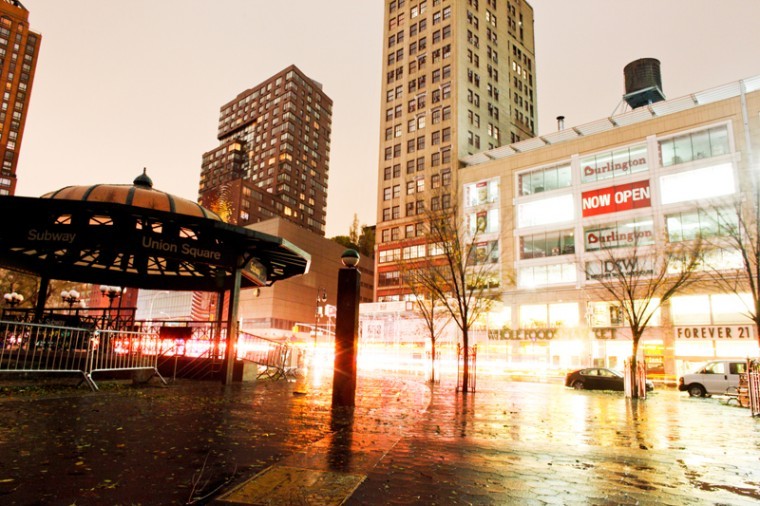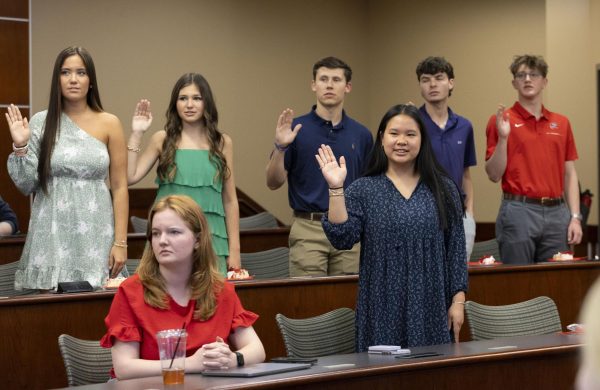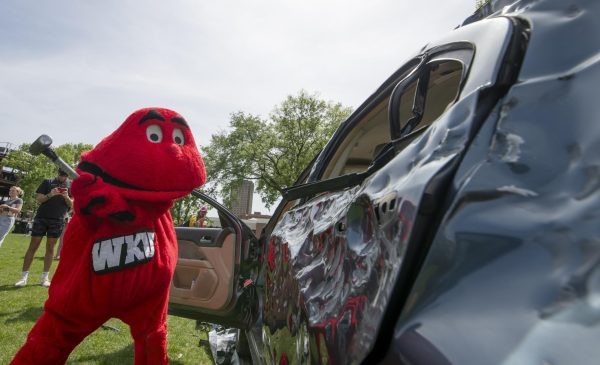Storm’s effects felt in WKU community
November 2, 2012
For some WKU students watching coverage of Hurricane Sandy at home, they may feel disconnected from the storm’s devastation.
St. Louis junior Kaitlynn Smith said it’s been hard for her to watch the coverage and not be able to do anything about it.
“You see New York being destroyed in a lot of movies, but to actually think of it happening from a natural disaster is kind of crazy,” Smith said.
This summer, Smith worked at Union Square in Lower Manhattan on an off-broadway show.
Lower Manhattan was one of the hardest-hit areas by the storm.
“I saw a building — well the picture of a building — where the facade collapsed, and it was a building that I passed all of the time because
only a couple of blocks away and it was on my way to work, so I frequently passed it,” she said. “And so, to see the building completely destroyed is kind of shocking.”
Relatives of Smith in the Queens borough of the city didn’t lose power, but can’t go to work or leave their apartment because of the storm.
“It’s the city that never sleeps and I didn’t realize how true that was until I was there,” she said. “Now that they are having to sit in their apartment for days because they can’t leave, it’s kind of driving them crazy.”
Some former WKU students are also dealing with the effects of the storm.
Michael Ip took classes at WKU until the fall 2010 semester and now lives in an area of Manhattan that has been greatly affected.
“My entire building has no water and no electricity,” Ip said. “Pretty much, Manhattan below 40th street has no electricity.”
He said the storm was much worse than he expected.
“I’m just not happy having to do the 12 floor walk up every single time I go home,” Ip said.
Ip, a freelance photographer for ABC News and the New York Daily News, said getting to ABC hasn’t been a problem because he walks, but the Daily News is a different story.
“Their building was completely flooded, and basically the building is inaccessible and there’s no power,” Ip said. “And they’ve basically had to make a makeshift newsroom in midtown.”
Transportation has also been a problem for New Yorkers because some of the subways were flooded.
“There are cabs, and people are driving,” Ip said. “However, because there’s no electricity, there’s no traffic lights so there is, like, extensive gridlocking. Traffic is horrendous.”
Schools have been closed because many children take the subway and can’t get to school, he said.
Cotuit, Mass., senior Emma Charpentier is from an area near Cape Cod.
Charpentier said in her hometown, there has been some damage to boardwalks and beach houses but her family “definitely avoided the worst part of it.” She said she was worried about her family and friends far away from WKU.
“It’s always hard when you hear that there’s really bad weather, you know, at home,” she said.
Linda Dennin, a WKU alumnae currently living in Merchantville, NJ., also said her area wasn’t as affected as other places.
“We’ve been really, really lucky,” Dennin said.
Dennin said half of the town she lives in has no electricity and a lot of trees are down.
“I know people that are without power, and I know people who have flooded basements,” Dennin said.
Dennin said a tree fell on her son’s two cars.
“My son had a tree fall on both of his cars, and that wasn’t much fun, but it just missed his house,” Dennin said. “He was just putting the baby to bed and his tree went down right beside that bedroom, so there’s been a lot of close calls, too, I guess.”
She said although the schools re-opened Wednesday, Halloween has been postponed in New Jersey — trick or treating will be next Monday.
Smith said New York became her home over the summer.
“The fact that my area is one of the worst affected areas is bothering me, and I’ve been getting emails from places that I went to in New York asking for help, and it makes me sad that I can’t do anything besides donating to the Red Cross.”






















![Students cheer for Senator at Large Jaden Marshall after being announced as the Intercultural Student Engagement Center Senator for the 24th Senate on Wednesday, April 17 in the Senate Chamber in DSU. Ive done everything in my power, Ive said it 100 times, to be for the students, Marshall said. So, not only to win, but to hear that reaction for me by the other students is just something that shows people actually care about me [and] really support me.](https://wkuherald.com/wp-content/uploads/2024/04/jadenmarshall-600x422.jpg)

